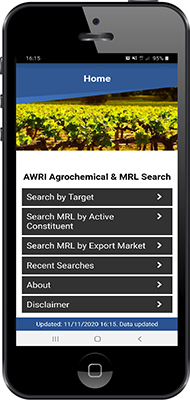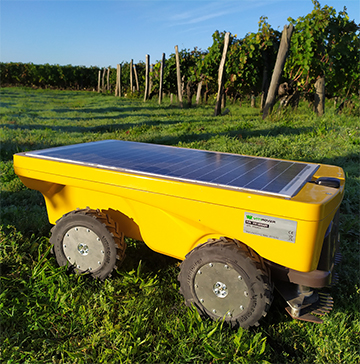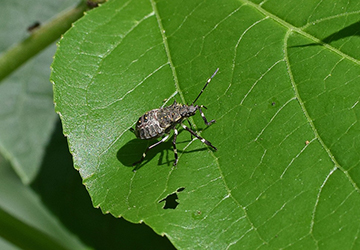Order the latest AWRI staff publications online
Accessing the latest AWRI publications is easy. Visit the AWRI Publications web page to:
- View the 10 most recent AWRI staff publications and order the articles online from the AWRI Library
- Search the staff publications database
- Read the full-text of ‘Technical Notes’ from Technical Review (PDF format)
- Read the full-text of ‘AWRI reports’ and ‘Vineyards of the world columns’ published in Wine & Viticulture Journal (PDF format)
- Read the full text of ‘Ask the AWRI columns’ published in Australian & New Zealand Grapegrower & Winemaker
The AWRI’s most recent publications are listed below.
2184 Varela, C., Bartel, C., Nandorfy, D.E., Borneman, A., Schmidt, S., Curtin, C. Identification of flocculant wine yeast strains with improved filtration-related phenotypes through application of high-throughput sedimentation rate assays. Sci. Rep. 10: 2738; 2020.
2185 Varela, C., Sundstrom, J., Cuijvers, K., Jiranek, V., Borneman, A. Discovering the indigenous microbial communities associated with the natural fermentation of sap from the cider gum Eucalytpus gunnii. Sci. Rep. 10: 14716; 2020.
2186 Nordestgaard, S. Autonomous vineyard robots and tractors. Aust. N.Z. Grapegrower Winemaker (680): 50-52, 54-60, 62, 64, 66-67; 2020.
2187 Essling, M. Ask the AWRI: The importance of soil organic matter. Aust. N.Z. Grapegrower Winemaker (680): 82-83; 2020.
2188 Smart, R., Bruer, D., Collins, C., Karantonis, C., Lockshin, L., Muhlack, R., Oemcke, D., Pike, B., Wilkes, E. Towards Australian grape and wine industry carbon neutrality… the possible dream. Aust. N.Z. Grapegrower Winemaker (680): 100, 102-105; 2020.
2189 Kang, W., Bindon, K.A., Wang, X., Muhlack, R.A., Smith, P.A., Niimi, J., Bastian, S.E.P. Chemical and sensory impacts of Accentuated Cut Edges (ACE) grape must polyphenol extraction technique on Shiraz wines. Foods 9(8): 1027; 2020.
2190 Onetto, C.A., Schmidt, S.A., Roach, M.J., Borneman, A.R. Comparative genome analysis proposes three new Aureobasidium species isolated from grape juice. FEMS Yeast Res. 20(6): foaa052; 2020.
2191 Pearson, W., Schmidtke, L.M., Francis, I.L., Carr, B.T., Blackman, J.W. Characterising inter- and intra-regional variation in sensory profiles of Australian Shiraz wines from six regions. Aust. J. Grape Wine Res. 26(4): 372-384; 2020.
2192 Coulter, A., Cowey, G., Essling, M., Hoare, T., Holdstock, M., Longbottom, M., Simos, C., Krstic, M. Vintage – observations from the AWRI helpdesk. Wine Vitic. J. 35(4): 39-41; 2020.
2193 Cowey, G. Ask the AWRI: Indole off-flavour in sparkling wine. Aust. N.Z. Grapegrower Winemaker (681): 46-47; 2020.
2194 Bekker, M.Z., Nandorfy, D.E., Kulcsar, A.C., Faucon, A., Bindon, K., Smith, P.A. Comparison of remediation strategies for decreasing ‘reductive’ characters in Shiraz wines. Aust. J. Grape Wine Res. doi: 10.1111/ajgw.12459; 2020.
2195 Cordingly, B. Ask the AWRI: Sparkling wine gushing: not a cause for celebration. Aust. N.Z. Grapegrower Winemaker (682): 42-43; 2020.
2196 Haddad, P.R., Taraji, M., Szücs, R. Prediction of analyte retention time in liquid chromatography. Analyt. Chem. DOI:10.1021/acs.analchem.0c04190; 2020.
2197 Essling, M., McKay, S., Petrie, P.R. Fungicide programs used to manage powdery mildew (Erysiphe necator) in Australian vineyards. Crop Prot. 139: 105369; 2021. |






